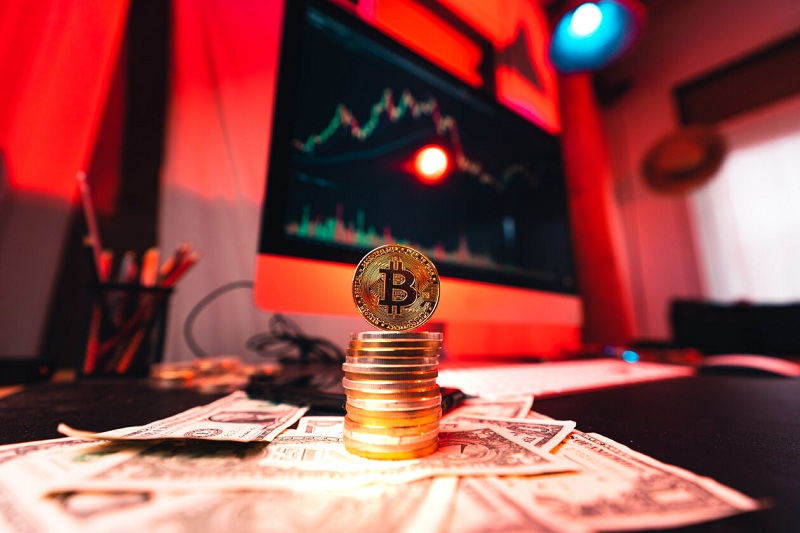Diving into the digital currency pool? How to trade cryptocurrency isn’t just a trend; it’s a skill. And like any skill, it starts with the basics. If you’re new to the crypto scene, feeling overwhelmed is normal—but hang tight! Begin by choosing the right exchange that fits your needs, then set up your trading account strategically. Your aim isn’t to ride the waves on luck alone; it’s to navigate with knowledge and intent. Stick with me as we explore simple yet powerful tips that evolve rookies into savvy traders. Let’s make those beginner moves count.
Understanding the Basics of Cryptocurrency Trading
Selecting the Right Crypto Exchange
When you start trading crypto, the first move is to pick an exchange. Think of it like a digital marketplace. But how do you choose the right one? You want a place that’s safe, easy to use, and has lots of coins to trade.
Here are quick tips to find the best exchange for you:
- Look for top names with lots of users and good reviews.
- Check if they offer the coins you’re interested in.
- See if they work in your country and have the right payment options.
- Make sure the fees are fair and not too high.
- Ask around and read online to learn from others.
Choosing a crypto exchange is like picking a partner. You want one that’s got your back and suits your trading style. Take your time. It’s a big deal that sets the stage for your trading adventure.
Setting Up Your Trading Account for Success
After picking an exchange, it’s time to set up your trading account. This step is crucial for making smart, secure trades. Here’s how to start on the right foot:
- Follow all the steps the exchange gives you. Don’t skip any. They’re there to protect you and your money.
- Be ready with your ID for KYC rules. This means they’re checking who you are to keep out bad actors.
- Use a strong password and set up two-factor authentication (2FA). This keeps your account safe from hackers.
- Link your bank or a payment method. Make sure it’s one you trust and fits your needs.
Setting up a trading account should be done with care. Think of it like building the foundation of a house. Solid groundwork means less trouble down the line. You’re setting the stage for all the trading you’ll do later.
Remember, understanding market orders, limit orders, and when to use stop loss can save you from big losses. Always start with knowing how much you can afford to risk. This will keep you from making hasty moves.
Trading crypto can be exciting and profitable. But it’s essential to learn the ropes before diving in. Take time to understand the basics like market orders, limit orders, and using stop loss strategies. This knowledge will help you make the best moves.
When it comes to chart patterns and trading pairs, get familiar with the most common ones. Knowing these will help you spot trends and opportunities in the market. Plus, it’s good to wrap your head around things like fundamental and technical analysis.
In short, when you’re a beginner, learning and setting up right are key. Choose your exchange wisely and set up your account with security in mind. Get to know the tools and rules of trading. By doing so, you’re paving your way to becoming a savvy trader in no time!

Mastering Trading Orders and Market Analysis
The Role of Market, Limit, and Stop Loss Orders
When you start trading, you’ll meet three orders: market, limit, and stop loss. Have you heard of them? They’re key to smart trading. Let me break it down easy for you.
Market orders are like buying a toy at the listed price. You say yes to the current price, and the trade happens fast. It’s simple and direct. With limit orders, you’re setting a price you’re okay with. Like saying, “I’ll buy that toy, but only if it’s ten dollars or less.” Your trade only goes if the price hits your mark.
Now, stop loss orders are nifty. They are your safety net. Think about telling a friend, “Sell my bike if the price drops to $50, so I don’t lose more.” It’s how you stop a big loss before it happens.
Each order is a tool. Knowing when and how to use them is your skill in the trade game.
Applying Fundamental and Technical Analysis to Your Strategy
Fundamental and technical analysis are your treasure maps in trading. They help find the golden bets. Here’s the scoop:
Fundamental analysis is like being a detective. You look at the news, global events, and company health. It’s all about what makes a crypto coin worth more or less. The goal? To figure out if a coin is a good deal or overpriced.
Technical analysis is different. It’s all about charts and numbers. Imagine watching your favorite racer. You check their past races to guess how they’ll do in the next one. It’s that, but with coin prices. You see patterns and trends that hint where prices could go.
Both ways give you clues. Use them to make smart picks on what to buy or sell.
To do this right, learn the clues to look for. What makes a chart important? What news matters to coin prices? Your mission is to get the hang of this. It can lead you to trade like a pro.
Got it? Great. With these tips, you can handle the trading world better. Remember, use orders as your tools and analysis as your map. Happy trading, and here’s to your trading success!
 How to trade cryptocurrency
How to trade cryptocurrency
Developing a Robust Trading Plan
Implementing Risk Management and Portfolio Diversification
When you start trading cryptos, you need a solid plan to keep money safe. One key is risk management. This means not putting all your money in one spot. It’s like, when playing dodgeball, you don’t stand in one place. You move around not to get hit. Same for trading. Spread your bets.
How do you do this? Use a mix of different coins. It’s called portfolio diversification. It helps you not lose all if one coin drops hard. Remember, don’t bet the farm on one coin. Use many to spread risk. Like eggs in baskets—one breaks, you still have more.
The Importance of Trading Styles: Spot, Day, Swing, and Positional
Next up, know your trading style. It’s just like sports—some play football, some swim. Each has its own style. In crypto, we got four main ones: spot, day, swing, and positional.
Spot trading is buying or selling cryptos right away, at market price. It’s quick, like a sprint.
Day trading is fast too. Buy and sell on the same day. This is more like a series of sprints.
Swing trading, though, is like a middle-distance run. It’s holding cryptos for days or weeks to catch price moves.
Last is positional trading. This one’s the marathon. You buy and hold for a long time.
Which is best? It depends on you. Like choosing a sport, pick what matches your speed.
By learning these, you grow your trading skills. You make your plan stronger. And you keep your money safer while chasing those big wins. Remember, a good plan today beats perfect plans later. Start small, learn, and get better as you go. Happy trading!

Advanced Trading Concepts and Security Measures
Exploring Leverage, Margin, and Short Selling Techniques
Trading crypto can feel like a wild ride. So, you need smart tactics to win. Let’s talk about leverage, margin, and short selling. These are not child’s play. They are the big league moves in the trading game.
First up: leverage and margin. Think of leverage as a boost to trade more than what you’ve got. It can lead to big wins, but also big losses, so handle with care. Margin trading means you borrow money for trading. You need a bit of your own coin, called margin. Both of these can amplify gains, but remember, they also crank up the risk.
Next, short selling. You bet that a crypto’s price will drop. You sell high, then buy low, and pocket the difference. But if the price climbs instead, your losses can skyrocket.
In every case, the key is to not get greedy. Start small. Grow your skills. And never, ever trade what you can’t afford to lose.
Securing Your Investments with Proper Wallet Management
Now, let’s keep those hard-earned cryptos safe. Wallets are where you store your digital coins. You’ve got hot wallets, online, convenient but risky if big hacks happen. Then there are cold wallets, offline, like a safe for your crypto. They’re safer from hackers.
Use hardware wallets for high security on your hefty investments. Look at them like a bank vault. Software wallets are good for smaller amounts. Easier to use day-to-day but less secure than hardware. Always back up your wallet. Write down recovery phrases, and keep them out of sight, somewhere only you know.
Finally, cold storage. That’s for the long haul. You stash your crypto offline on stuff like USB drives. It’s safe from online threats but don’t lose it – there’s no ‘forgot my password’ here.
When you’re dealing with crypto, think security first, trading second. Put the time into securing your stash. Your future self will thank you for it.
In crypto, what you know and how you protect it makes all the difference. So, learn heaps and lock it down tight. That’s how you trade smart and stay in the game.
Remember these tips as you navigate through cryptocurrency’s choppy waters. They’ll help you trade better and keep your investments safer. It’s all about knowing the game’s rules and setting up a good defense for your digital treasure.
In this guide, we’ve walked through the key steps to becoming a savvy crypto trader. We started with the basics like choosing the right exchange and setting up your account. Then, we moved into understanding orders and how to use market analysis to make smarter trades. After that, we talked about creating a strong plan with risk management and choosing your trading style.
Finally, we dove into advanced concepts like leverage and ways to keep your investments safe. It’s a lot to take in, but with these tools, you’re now on your way to trading crypto with confidence. Remember, every pro trader started as a beginner. Keep learning, stay cautious, and always manage your risks smarter. You’ve got this!
Q&A :
How do I start trading in cryptocurrency?
Starting to trade in cryptocurrency involves several steps. Firstly, you need to select a reputable exchange platform where you can buy, sell, and hold cryptocurrencies. Signing up typically requires verifying your identity to comply with regulatory standards. Once set up, you can fund your account with fiat currency or other cryptocurrencies, depending on the exchange policies. Before you start trading, it’s essential to educate yourself about different cryptocurrencies, market trends, and trading strategies. Make sure to set clear goals, establish a risk management strategy, and start trading with small amounts to gain experience.
What are the best strategies for trading cryptocurrency?
The best strategies for cryptocurrency trading vary depending on individual risk tolerance and market conditions. Some of the most common strategies include:
- Day Trading: Involves entering and exiting positions within the same trading day to capitalize on intraday price movements.
- Swing Trading: This method focuses on taking advantage of price “swings” or cycles, holding positions for several days or weeks.
- Scalping: A strategy that makes profits off small price changes and is often applied during high volumes and market liquidity.
- Position Trading: It is a long-term strategy where traders hold onto their positions for weeks, months, or even years, with the expectation that their value will significantly increase.
- Arbitrage: Exploits price differences across different exchanges or market inefficiencies.
It’s crucial to backtest strategies and stay informed on market news and technical analysis to increase your chances of success.
What do I need to know about cryptocurrency risks before trading?
Before trading cryptocurrencies, it’s important to understand that the crypto market is highly volatile, and prices can fluctuate wildly in a short amount of time. There’s also the risk of hacking and fraud in the crypto space, so it’s vital to use secure wallets and exchanges with strong security measures. Regulatory risks should also be considered, as any new government regulations can affect the price and legality of cryptocurrency trading. It’s critical to only invest what you can afford to lose and do your own research before making any trading decisions.
Can I trade cryptocurrency for free?
Trading cryptocurrency is rarely completely free; most exchanges charge fees for trading. These can be trading fees (commission for executing a trade), withdrawal fees, and occasionally deposit fees. However, there are a few platforms that offer zero-fee trading for certain pairs or under specific conditions. It’s also possible to find exchanges that offer fee discounts based on the volume of trades you perform or if you use their native exchange token. Always review the fee structure of an exchange before starting to trade.
Is it safe to trade cryptocurrency online?
While trading cryptocurrency online is convenient and accessible, it’s not without its risks. To enhance safety, choose well-established, reputable cryptocurrency exchanges that implement high-level security measures such as two-factor authentication (2FA), encryption, and cold storage for the majority of funds. Always use strong, unique passwords for your trading accounts and consider using a dedicated device for trading. Be wary of phishing attempts and never share your private keys or passwords. Regularly update yourself on recommended cybersecurity practices, and remember that the safety of your investments also depends on your vigilance.



